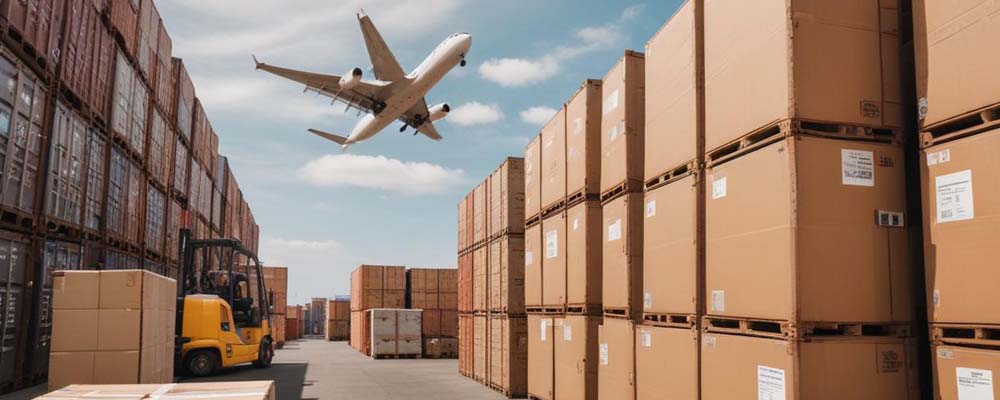 In a world where fresh produce, pharmaceuticals, and gourmet foods are in high demand, shipping perishable goods internationally has become a crucial part of global trade. Yet, this task is fraught with challenges that can make or break a shipment. How can businesses ensure their perishable goods arrive safely and efficiently?
In a world where fresh produce, pharmaceuticals, and gourmet foods are in high demand, shipping perishable goods internationally has become a crucial part of global trade. Yet, this task is fraught with challenges that can make or break a shipment. How can businesses ensure their perishable goods arrive safely and efficiently?
This blog post aims to unravel the complexities of shipping perishable goods across borders. We’ll cover essential aspects such as regulations, packaging, transportation, and technology to help you master the art of keeping perishable items fresh and intact during international transit.
 The Importance of Proper Planning
The Importance of Proper Planning
Why Planning Matters
Planning is the cornerstone of successful shipping of perishable goods. Consequently, the absence of thorough planning exposes you to risks such as spoilage, delays, and financial losses. Moreover, meticulous planning guarantees that every facet of the shipping process is considered, ranging from adherence to regulatory requirements to the selection of the most suitable mode of transportation.
Steps to Effective Planning
Begin by identifying the type of perishable goods you’re shipping. Different products have unique requirements. For instance, fresh produce needs different handling compared to pharmaceuticals. Create a detailed plan that includes timelines, necessary documentation, and contingency measures.
Common Pitfalls to Avoid
A lack of planning can give rise to multiple challenges. For instance, absent documentation may lead to customs delays, while insufficient packaging could result in spoilage. Therefore, it is wise to learn from the missteps of others and ensure that every detail is thoroughly planned.
 Understanding Regulations and Compliance
Understanding Regulations and Compliance
International Regulations Overview
Shipping perishable goods internationally involves adhering to various regulations. These regulations ensure that the products remain safe for consumption and minimize the risk of contamination during transit.
Key Regulatory Bodies
Familiarize yourself with key regulatory bodies such as the U.S. FDA, European Food Safety Authority, and other relevant authorities in your destination countries. Each has specific guidelines that must be followed.
Essential Documents
Typical documents required for shipping perishable goods encompass the Commercial Invoice, Bill of Lading,, Certificate of Origin, and Import/Export Licenses. Furthermore, it is crucial to ensure that all documents are accurately completed and accompany the shipment.
Staying Compliant
Compliance is imperative and non-negotiable. Firstly, ensure that all necessary permits and certifications are secured. Furthermore, it is essential to keep yourself regularly updated on regulatory changes to maintain compliance and avoid any penalties.
Choosing the Right Packaging
Importance of Packaging
Packaging is crucial in maintaining the integrity of perishable goods. It protects the items from external factors such as temperature fluctuations, humidity, and physical damage.
Types of Packaging Materials
Different perishable goods require different packaging materials. For instance, insulated containers, gel packs, and dry ice are commonly used for cold chain logistics. Choose materials that provide optimal protection for your specific goods.
Best Practices in Packaging
Ensure that packaging is sturdy and provides adequate insulation. Seal packages properly to prevent contamination. Use temperature indicators to monitor conditions inside the package during transit.
Selecting the Appropriate Transportation Mode
Modes of Transportation
Air, sea, and land are the primary modes of transportation for perishable goods. Each has its advantages and limitations. Air freight is fast but costly, while sea freight is economical but slower.
Factors to Consider
Consider the nature of your goods, destination, and budget when selecting a transportation mode. Perishable goods that require quick delivery are best shipped by air, while those with longer shelf lives can go by sea.
Coordinating Multi-Modal Transport
Frequently, it is necessary to utilize a combination of transportation modes. Coordinating multi-modal transport, therefore, requires seamless transitions between air, sea, and land to ensure timely delivery.
The Role of Technology in Shipping Perishables
Technological Innovations
Technology has revolutionized the shipping industry, particularly for perishable goods. Innovations such as IoT sensors, GPS tracking, and blockchain ensure transparency and efficiency.
Monitoring and Tracking
Real-time monitoring and tracking provide visibility into the shipment’s condition throughout its journey. This helps in proactively addressing any issues that may arise.
Data Analytics
Leveraging data analytics can optimize routes, predict potential delays, and enhance overall efficiency. Use historical data to make informed decisions and improve future shipments.
Cold Chain Logistics
What is Cold Chain?
Cold chain logistics refers to the transportation of temperature-sensitive products in a controlled environment. It is essential for maintaining the quality and safety of perishable goods.
Components of a Cold Chain
A successful cold chain involves refrigerated storage facilities, temperature-controlled vehicles, and real-time temperature monitoring systems. Each component works together to maintain the required conditions.
Ensuring Cold Chain Integrity
Regularly audit your cold chain processes to identify and rectify any weak points. Train staff on the importance of maintaining cold chain integrity and use redundant systems to mitigate risks.
Risk Management Strategies
Identifying Risks
Identify potential risks such as spoilage, delays, and regulatory non-compliance. Gaining insight into these risks enables you to formulate strategies to effectively mitigate them.
Mitigating Risks
Use reliable suppliers and carriers, invest in quality packaging, and maintain regular communication with all parties involved. Having contingency plans in place can help address unexpected issues.
Insurance for Perishable Goods
Invest in comprehensive insurance coverage for your perishable goods. This provides financial protection against potential losses due to spoilage, damage, or delays.
 Building Strong Supplier Relationships
Building Strong Supplier Relationships
Importance of Reliable Suppliers
Reliable suppliers are the backbone of successful perishable goods shipping. They provide quality products and adhere to agreed timelines.
Evaluating Suppliers
Regularly evaluate suppliers based on their performance, quality of goods, and adherence to timelines. Establish clear communication channels and build trust through transparency.
Long-Term Partnerships
Cultivate long-term partnerships with suppliers who consistently meet your expectations. These partnerships can lead to better pricing, priority service, and collaborative problem-solving.
Sustainable Practices in Shipping Perishables
Environmental Impact
The shipping industry has a significant environmental impact. Implementing sustainable practices can help reduce this footprint.
Sustainable Packaging
Opt for eco-friendly packaging materials that are biodegradable or recyclable. Educate your customers on the importance of sustainability and encourage responsible disposal.
Energy-Efficient Transportation
Choose energy-efficient transportation options and optimize routes to reduce fuel consumption. Partner with carriers who prioritize sustainability.
 Engaging with Customers
Engaging with Customers
Importance of Customer Communication
Effective communication with customers is crucial for fostering trust and loyalty. By consistently keeping them informed about the status of their shipments and promptly addressing any concerns, you foster a transparent relationship. This approach not only enhances customer satisfaction but also strengthens their confidence in your services.
Providing Value-Added Services
Offer value-added services such as detailed tracking, delivery notifications, and after-sales support. These services enhance the customer experience and set you apart from competitors.
Collecting Feedback
Continuously gather feedback from your customers to enhance your services. Utilize this feedback to implement necessary adjustments, thereby surpassing customer expectations.
Conclusion
Shipping perishable goods internationally is a complex but rewarding endeavor. By mastering the art of planning, understanding regulations, and leveraging technology, you can ensure your products reach their destination in optimal condition. Building strong supplier relationships and engaging with customers further enhance your success.
By following these guidelines, you can transform the challenge of shipping perishable goods into a competitive advantage. Stay informed, stay prepared, and watch your business thrive in the global market.




 The Importance of Proper Planning
The Importance of Proper Planning Understanding Regulations and Compliance
Understanding Regulations and Compliance Building Strong Supplier Relationships
Building Strong Supplier Relationships Engaging with Customers
Engaging with Customers



